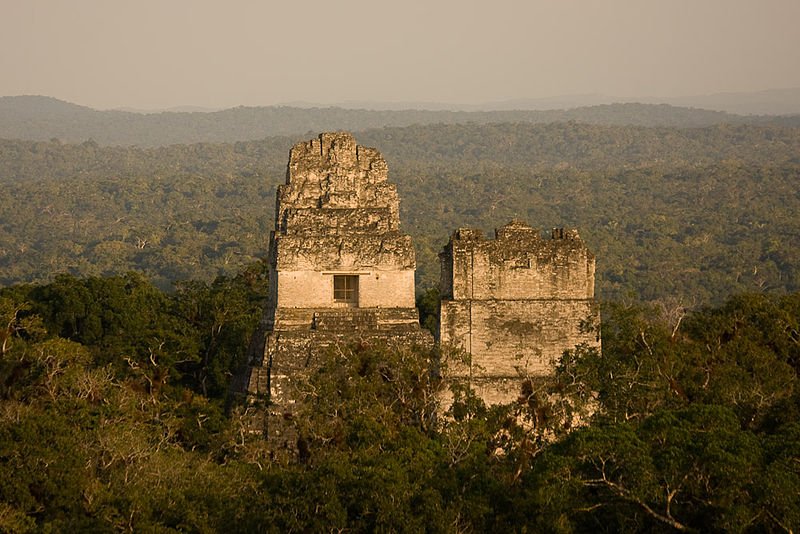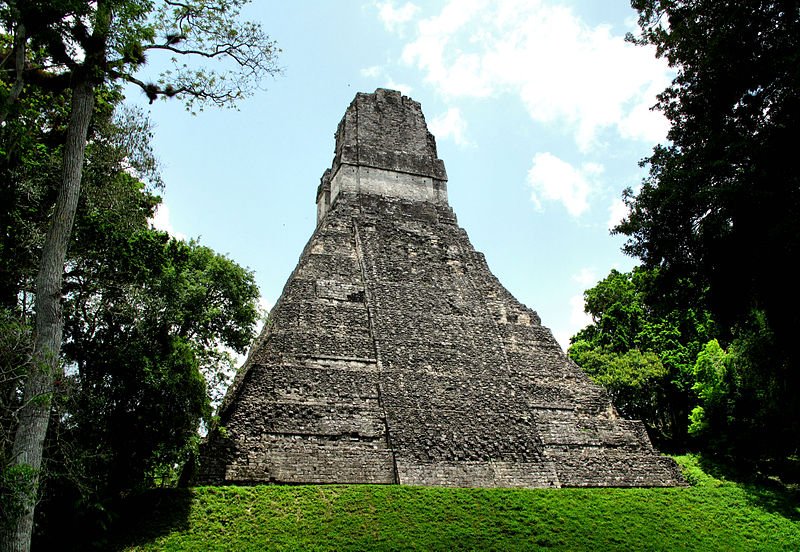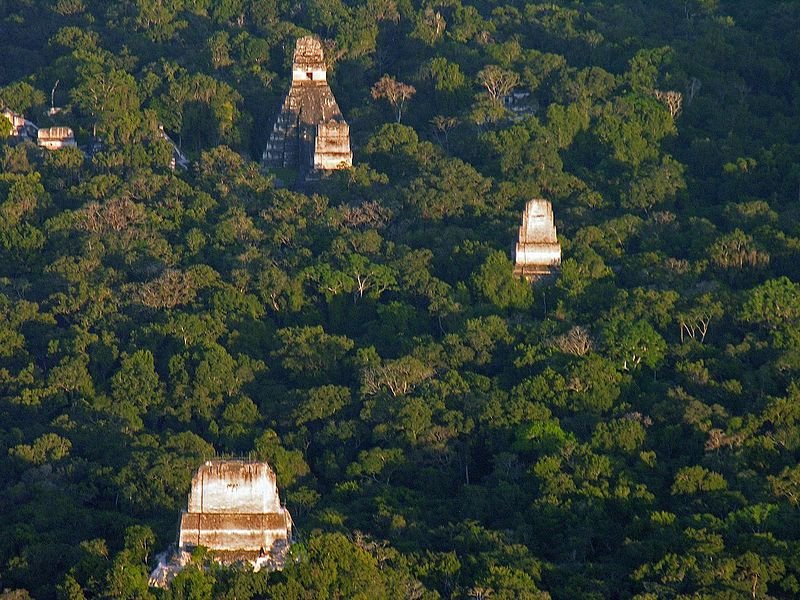 Temples I and II in Tikal National Park, Guatemala
Temples I and II in Tikal National Park, GuatemalaSource: https://commons.wikimedia.org/wiki/File:Temples_I_%26_II_from_Temple_IV_(3267626478).jpg
Author: Greg Willis

Tikal National Park is both an important ancient Mayan site as well as a significant wildlife protected reserve. Its Mayan heritage dates to the period between the 6th century BC to the 10th century AD, when the Mayan civilization flourished in the area. Today Mayan ruins can be seen in Tikal, in the form of its awesome stepped pyramid temples, palaces and public squares.
Tikal is located in the archaeological region of the Petén Basin, in the northern part of Guatemala. In ancient times, it was the capital of one of the most powerful Maya kingdoms. Most of the monumental ruins of Tikal date to its Classic Period, between ca. 200 to 900 AD. During this period Tikal was the dominant power in the Mayan world, and established trade interactions with neighbouring states of Teotihuacan in the Valley of Mexico.
 Temple 1, Tikal
Temple 1, TikalSource: https://commons.wikimedia.org/wiki/File:Temple_1_Back_(3746461473).jpg
Author: Francisco Anzola

Tikal National Park was inscribed as a World Heritage Site in the mixed category of both cultural and natural significance, during the 3rd session of the World Heritage Committee meeting in Cairo and Luxor on 22-26 October, 1979.
World Heritage Site Inscription Details
Location: N 17 13 W 89 37Inscription Year: 1979
Type of Site: Mixed
Inscription Criteria: I, III, IV, IX, X
 Aerial view, Tikal
Aerial view, TikalSource: https://commons.wikimedia.org/wiki/File:Flickr_-_archer10_(Dennis)_-_Guatemala-1956_Tikel.jpg
Author: Dennis Jarvis

Visiting Tikal National Park
Tikal National Park is opened daily from 6:00 am to 6:00 pm. Most visitors come in tour groups based in Flores, where you can arrange with the local travel agent. Flores, the main town in Petén, can be reached by plane from Guatemala City by TACA Airlines, or by Tropic Air from Belize City. Latest updates on Penang Travel Tips
Latest updates on Penang Travel Tips

Copyright © 2003-2025 Timothy Tye. All Rights Reserved.

 Go Back
Go Back